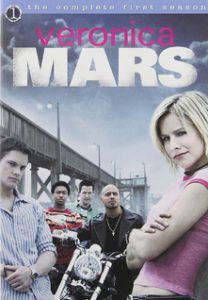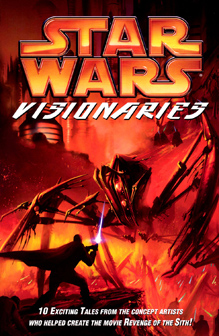After the hard work of providing conceptual art for “Episode III: Revenge of the Sith,” 11 artists got to cut loose with short stories or other works of their choosing for the trade paperback “Visionaries” (2005), a brainchild of J.W. Rinzler (author of the “Making of” books) that came out right before the film’s release.
As with the “Tales” series, there was no requirement that these yarns be part of the canon. But while Lucasfilm didn’t approve the stories for continuity purposes, it does own everything produced for “Star Wars” comics. (In that sense, the entire Expanded Universe is now conceptual art for Disney’s take on the saga.) As such, one of these stories ended up being repurposed as a key piece of pre-production work for “The Clone Wars” TV series. Here are my rankings of the 11 contributions to “Visionaries.”

1. “Old Wounds” by Aaron McBride – In by far the most famous “Visionaries” tale, McBride gives us the first image of a resurrected Darth Maul with mechanical legs. The whole design, even Maul’s longer horns that show his feral nature, was used pretty much verbatim in “The Clone Wars.” Even McBride’s story isn’t that far off: Although we don’t learn how Maul survived or got the legs, he is obsessed with killing Obi-Wan, same as the TV series. Here, though, he recovers prior to the Clone Wars period, and is seen stalking Kenobi at Kamino, Geonosis, Mustafar and Polis Massa before tracking him down on Tatooine.
2. “The Eyes of Revolution” by Warren Fu – For some reason, the Expanded Universe never gave us General Grievous’ backstory in story form (it’s reflected upon in “Labyrinth of Evil”), so this is as close as it gets. Dooku and Sidious get hold of a great Kaleesh warrior who is seriously wounded in battle, making him the perfect candidate for an experimental cyber-suit designed by San Hill of the Intergalactic Banking Clan. There’s a nice synergy to the fact that Darth Plagueis, who was obsessed with conquering death, and San Hill are both of the Muun species.
3. “Entrenched” by Alex Jaeger and M. Zachary Sherman – In the tale of a Hoth rebel soldier, we get a peek “off-screen” during the Battle of Hoth, including the AT-ATs disembarking from the Star Destroyer outside shield range and an AT-ST attack on the ion cannon.
4 and 5. “Celestia Galactica Photographica” by Ryan Church and “Imperial Recruitment” by Feng Zhu – Church portrays sprawling scenes at various galactic ports while Zhu delivers recruitment posters featuring sexy Imperials that would fit in well with the era of TV’s “Rebels.”
6. “Prototypes” by Robert E. Barnes – Similar to the Grievous situation, here we get the origin story of the Separatists’ nearly indestructible sentient/mechanical construct General Durge, a major villain of the “Clone Wars” microseries who never really caught on with fans.

7. “Deep Forest” by Sang Jun Lee – The Wookiees, who would prefer to stay out of the Clone Wars, mull overtures from the Separatists and the Republic. After a Separatist probe droid kills a young Wookiee, the decision for the Wookiee elders is easy.
8. “The Artist of Naboo” by Erik Tiemens – With just the hint of a story, the artist renders impressionist paintings of Padme’s home planet.
9. “Sithisis” by Derek Thompson – The artist gives a horror-style take on Sidious’ rise (or descent, depending on your point of view) to evil power.
10 and 11. “The Fourth Precept” by Stephan Martiniere and “Wat Tambor and the Quest for the Sacred Eye of the Albino Cyclops” by Michael Murnane – Martiniere’s piece doesn’t even seem connected to “Star Wars,” and the title is the least weird part of Murnane’s yarn. Seriously, the writers of the U.K. shorts collected in “Devilworlds” would think this is an odd tale.
How would you rank the 11 contributions in “Visionaries?”

